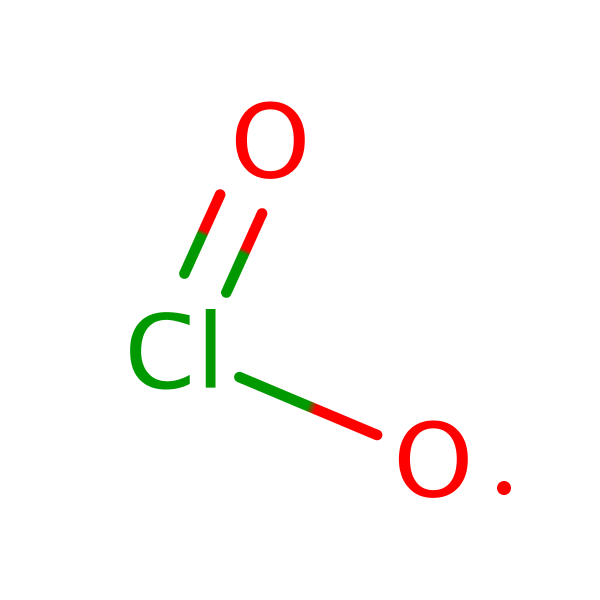Chlorine dioxide
CASRN 10049-04-4 | DTXSID5023958
- Toxicological Review (PDF) (56 pp, 144 K)
- IRIS Summary (PDF) (25 pp, 177 K)
Noncancer Assessment
Reference Dose for Oral Exposure (RfD) (PDF)
(25 pp, 177 K)
Last Updated: 10/12/2000
| System | RfD (mg/kg-day) | Basis | PoD | Composite UF | Confidence |
|---|---|---|---|---|---|
| Nervous, Developmental | 3 x 10 -2 | Neurodevelopmental effects |
NOAEL
:
3
mg/kg-day |
100 | Medium/High |
Reference Concentration for Inhalation Exposure (RfC) (PDF)
(25 pp, 177 K)
Last Updated: 10/12/2000
| System | RfC (mg/m3) | Basis | PoD | Composite UF | Confidence |
|---|---|---|---|---|---|
| Respiratory, Cardiovascular | 2 x 10 -4 | Vascular congestion and peribronchial edema |
LOAEL
(HEC):
6.4
x 10-1 mg/m3 |
3000 | Low |
Cancer Assessment
Weight of Evidence for Cancer (PDF)
(25 pp, 177 K)
Last Updated: 10/12/2000
| WOE Characterization | Framework for WOE Characterization |
|---|---|
| D (Not classifiable as to human carcinogenicity) | Guidelines for Carcinogen Risk Assessment (U.S. EPA, 1986) |
| Carcinogenic potential cannot be determined | Proposed Guidelines for Carcinogen Risk Assessment (U.S. EPA, 1996) |
- Under the current guidelines (U.S. EPA, 1986), chlorine dioxide is classified as Group D; not classifiable as to human carcinogenicity because of inadequate data in humans and animals. Under the draft Carcinogen Assessment Guidelines (U.S. EPA, 1996), the human carcinogenicity of chlorine dioxide cannot be determined because no satisfactory human or animal studies assessing the chronic carcinogenic potential of chlorine dioxide have been located.
- This may be a synopsis of the full weight-of-evidence narrative.
Quantitative Estimate of Carcinogenic Risk from Oral Exposure (PDF) (25 pp, 177 K)
Not assessed under the IRIS Program.
Quantitative Estimate of Carcinogenic Risk from Inhalation Exposure (PDF) (25 pp, 177 K)
Not assessed under the IRIS Program.
- Human Health Benchmarks for Pesticides (HHBP). This database provides human health benchmarks for pesticides that may be present in drinking water.
- Office of Pesticide Programs Pesticide Chemical Search. This database provides links to health effects information and registration status for pesticides.
- Chemistry Dashboard. This database provides information on chemical structures, experimental and predicted physicochemical, and toxicity data.
You will need Adobe Reader to view some of the files on this page. See EPA's PDF page to learn more.
Contact Us to ask a question, provide feedback or report a problem.





